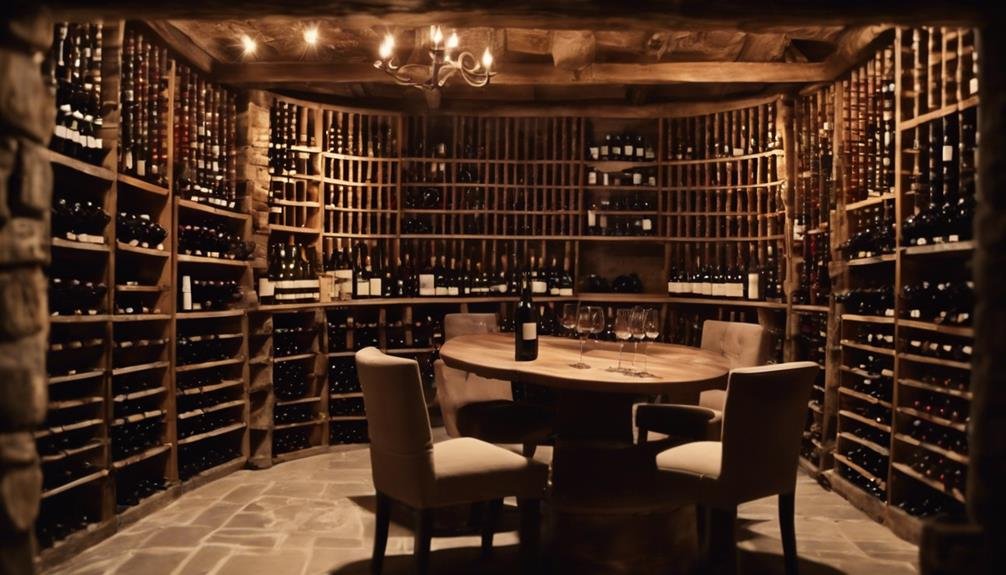Embark on the rich journey of French wine, a world of traditions, terroirs, and grape varietals woven into a tapestry of flavors. Learn about Bordeaux's perfect match with rich meats, Burgundy's affinity for poultry, or Rhône Valley wines' spice allure. Discover Chardonnay, Cabernet Sauvignon, and Syrah, key players shaping French wine identities. From gravelly Bordeaux to limestone Burgundy, diverse Rhône Valley soils, and Beaujolais' granite base, each region offers a unique wine essence. Elevate your experience by exploring expert recommendations, trying new varietals, and savoring the colors and aromas. Pair wines thoughtfully to reveal endless French wine treasures.
French Wine Basics
In order to appreciate French wine fully, it is essential to grasp the fundamental aspects of its production, regions, and grape varieties. French wine pairings can elevate the tasting experience, as each region offers unique flavor profiles.
Understanding French wine terminology, such as 'terroir' and 'cru', can provide insights into the quality and style of the wine. When exploring French wines, consider pairing Bordeaux with rich meats, Burgundy with poultry or mushrooms, and Rhône Valley wines with spicy dishes.
Learning about grape varieties like Chardonnay, Cabernet Sauvignon, and Syrah can help in selecting wines that suit your preferences. By delving into these basics, one can begin to unravel the diverse and rich tapestry of French wine.
Exploring French Wine Regions
To gain a deeper understanding of French wine, it is essential to explore the distinct characteristics and nuances of its renowned wine regions. Each region in France offers unique terroir exploration opportunities and showcases specific grape varietals that contribute to the diversity of French wines. Understanding the regional differences is vital for appreciating the complexity and richness of French wine. Below is a table highlighting some key aspects of prominent French wine regions:
| French Wine Regions | Terroir Exploration | Grape Varietals |
|---|---|---|
| Bordeaux | Gravelly soil for reds, limestone for whites | Merlot, Cabernet Sauvignon |
| Burgundy | Limestone soils across subregions | Pinot Noir, Chardonnay |
| Rhône Valley | Diverse soils: granite, limestone, sandy | Syrah, Grenache |
| Languedoc-Roussillon | Mediterranean climate, varied soils | Grenache, Carignan |
| Beaujolais | Granite-based soils | Gamay |
Exploring these regions provides a profound insight into the world of French wine, aiding in wine pairings and appreciation of the regional nuances.
Enhancing Your French Wine Experience

Consider enhancing your French wine experience by incorporating expert recommendations and expanding your palate with new varietals and regions.
When it comes to tasting techniques, start by observing the wine's color and giving it a gentle swirl to release its aromas. Take small sips to fully appreciate the flavors and textures.
Experiment with different food pairings to discover how they can complement or contrast with the wine. For example, try a bold Bordeaux with a juicy steak or a delicate Burgundy with some creamy Brie cheese.
Frequently Asked Questions
How Can I Pair French Wine With Food?
Pairing French wine with food involves considering flavor profiles to complement each other. Light wines like Chardonnay pair well with seafood, while bold Bordeaux reds enhance red meat. Serving temperatures are important; whites at 45-50°F and reds at 60-65°F.
What Are Some Unique French Wine Varietals?
Exploring French wine varietals is an adventure like unearthing obscure gems or discovering hidden treasures. Seek out unique varieties like Arbois, Romorantin, or Trousseau to explore the lesser-known but exquisite world of French wines.
What Are Some Up-And-Coming French Wine Regions?
Emerging producers in French wine regions are responding to climate change implications by exploring new terroirs. Areas like Jura, Savoie, Corsica, and Provence are gaining recognition for their unique expressions. These regions offer exciting possibilities for wine enthusiasts.
How Can I Properly Store French Wine at Home?
Proper storage of French wine at home involves maintaining temperature control to preserve quality. Store bottles horizontally in a cool, dark place with consistent temperature around 55°F. Avoid temperature fluctuations to prevent premature aging or spoilage.
Are There Any Sustainable or Organic French Wine Options?
Sustainable and organic French wine options are increasingly popular, with a notable 30% rise in biodynamic farming practices and natural winemaking techniques. These methods prioritize environmental health and offer consumers a more conscious choice in their wine selection.
Conclusion
To sum up, immersing yourself in the world of French wine can be a rewarding and enlightening experience.
By understanding the basics, exploring the diverse regions, and enhancing your knowledge with valuable resources, you can discover a deeper appreciation for the rich heritage and diversity of French wine.
Delving into this intricate world with a methodical approach can truly enhance your enjoyment and understanding of each bottle you uncork.